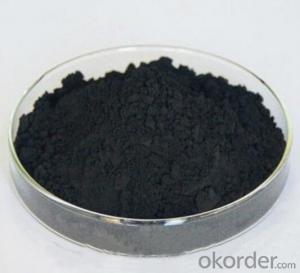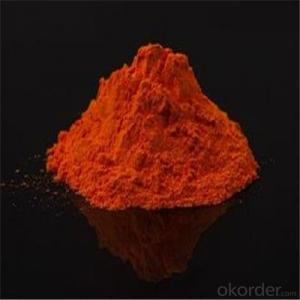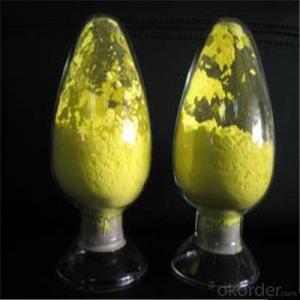LED Fluorescent Powder with High Brightness Supplied by China
- Loading Port:
- Huangpu
- Payment Terms:
- TT OR LC
- Min Order Qty:
- 77 kg
- Supply Capability:
- 100000 kg/month
OKorder Service Pledge
OKorder Financial Service
You Might Also Like
Description of LED Fluorescent:
Extensive usage: it applies to various LED encapsulation from cool white to warm white. The rendering index can be up to 98 with red powder.
Festures of LED Fluorescent:
phosphor of MINHUI is a new type of long after-glow powder, it can continuously give off light for over 12 hour phosphor for straight tube lamp, with high brightness,lumen maintenace,low-light decline,kinds of color temperature. phosphor is called as calcium halphos ,fluorescent powder for fluorescent lamp ,phosphor powder for lamp ,halo phosphor,glowing powder,lamp powder,phosphor for lamp,light powder etc.
Specifications of LED Fluorescent:
Appearance: Yellow crystalline powder
Chemical composition: Rare earth aluminate
Physical stability: waterproof and heatproof. No any changes under -50°C to 300°C in the air.
Chemical stability: under 200°C, brightness >90%; within 1000 hours after encapsulation, brightness decay
Safety: Conform to the RoHS {EU (Restriction of Hazardous Substances)} and all security standards. Non-poisonous, non- radioactivity and do no harm to human and environment.
Images of LED Fluorescent:

FAQ:
1.When can i get the price quotation?
We can send you the quotation within 24hours after your inquiry, including the shipping cost if you need.
2.What about payment term?
30% T/T deposit, balance against B/L copy.
Full T/T payment if quantity less than MOQ.
3. What’s your after-sales service?
One-year warranty, and 1% common accessories.
- Q: I bought the color Frozen White, and the store sample was sort chunky too, and it doesn't go on my skin well because of that. How can I apply it on smoothly? do I need to add a little water??? help!!!!
- Some pigments are just designed to be chunky. As the answer above said, definitely use fix+ or mixing mediums. water will not be good enough as it does not have that 'sticky' residue that both fix+ and mixing mediums have. Also, I find that having an eyeshadow base helps a lot - makes pigments a tad easier to blend. This may work or it may not, really depends on the individual pigment, and i've never used Frozen White before... BUT try breaking up the pigment chunks by using a plastic spatula (should be able to buy them in make up stores like Sephora). Literally, put some on the cap and then just crush it until it becomes finer. Hope this helps :)
- Q: How do you use pigments?
- technically, pigment is a coloured mineral of a few type it relatively is floor as fantastic as available. (i.e., cobalt is blue, iron produces reds, etc.) Pigment is a similar whether it fairly is in cosmetics, ceramics, or in paint. in spite of the undeniable fact that, cutting-ingredient chemical ingredients can even have the end results of coloring the ingredients of cosmetics, yet that would lead them to a colorant, no longer a pigment.
- Q: What are iridescent magnetic effect pigments?
- Iridescent okorder /... (really long explanation)
- Q: what is pigment?
- In biology, a pigment is any material resulting in color of plant or animal cells. Many biological structures, such as skin, eyes, fur and hair contain pigments (such as melanin) in specialized cells called chromatophores. Many conditions affect the levels or nature of pigments in plant and animal cells. For instance, Albinism is a disorder affecting the level of melanin production in animals. Pigment color differs from structural colour in that it is the same for all viewing angles, whereas structural color is the result of selective reflection or iridescence, usually because of multilayer structures. For example, butterfly wings typically contain structural color, although many butterflies have cells that contain pigment as well.
- Q: I need to know the classes and sub classes of pigments classification
- organic pigment and inorganic pigment
- Q: As in like makeup pigments??????
- they are small red dots.. and i know this bcuz i have a disease called shambergs disease where you get small little pigments on your legs and they look like bruises.. the doctor calls them red ink dots but this is a treatable condition.. and i think, by the information you gave on your question, that you have these on your face.. so you should go to your doctor.. and they can prescribe you with an antibiotic that will treat your condition.. Goodluck and i hope this helped you find whatever it was you were looking for. *love always, Brit
- Q: pigment: its color (to our eyes) what color of light it absorbsChl a Chl bCartenoidsany right answers would bbe greatly appreicated thanks soo muchhh
- pigment: .... reflected color to eyes .. what color of light it absorbs Chl a reflects green spectra between the blue and red absorption peaks. Some is absorbed at blue 450nm but most absorbed at red 680 - 700nm. Chl b reflects green spectra between the blue and red absorption peaks with a difference in which peak is stronger. Most is absorbed at blue 470 but also some at blue 430 and red 640 nm. Cartenoids reflect yellow, orange, or red and absorbs blue to blue-green light spectra. Xanthophyll absorbs well at 400-530 nm. Xanthophylls are a common sub class of the carotenoid pigment group. Beta-carotene absorbs most strongly between 400-500 nm.
- Q: Does anyone know of a way to change the color of your iris' permanently?I've been researching for a while, and have not been able to find anything! I already know about newcoloriris (surgery), but that had loads of side effects. I already know about contacts (ive had them on and off for a while).I don't see how with all the science and technology in the world, there's no way to simply lighten your eye color. We can literally dye our skin, we can tattoo our eyeballs, we can do almost ANYTHING in the world today. So, how has nobody discovered a way to change eye color.?I'm aware that blue/light eyes are a result of low melanin production, But i don't understand how there's no known way to reduce the overproduction of melanin in darker/brown eyed people.It's really frustrating. If anyone knows any websites, doctors, or scientists currently working on a way to do this, please let me know! Or if you know of a new way someone has come up with, please let me know!lt;3 THANKSSSS
- Hurrah, that's what I was looking for! Thanks to author of this question.
- Q: (After the fifteenth century)
- Pigment is color in powder form. An example is lamp black; it was first made from the soot of kerosene lamps ground fine. Binder is a substance used to hold pigment together and make it adhere; in the previous example, linseed oil would be the binder for the lamp black pigment. Vehicle is a medium acting as a solvent, carrier, or binder for paint; turpentine or mineral spirits would be a vehicle but so would linseed oil as well to help dilute the paint and help it cover a large area. Hope that helps and thanx.
- Q: What are leaf Pigments?
- Pigments that are present in the leaf that impart colour to the leaf are called leaf pigments. They are chemical compounds. Green colour in plants is due to Chlorophyll. Cholorophyll are also of different types Chlorophyll-A, Chlorophyll-B, Chlorophyll-C and Chlorophyll-D. Different colours are imparted to plants by different pigments. Some are Xanthophyll and Carotenoids.
Send your message to us
LED Fluorescent Powder with High Brightness Supplied by China
- Loading Port:
- Huangpu
- Payment Terms:
- TT OR LC
- Min Order Qty:
- 77 kg
- Supply Capability:
- 100000 kg/month
OKorder Service Pledge
OKorder Financial Service
Similar products
Hot products
Hot Searches
Related keywords






























